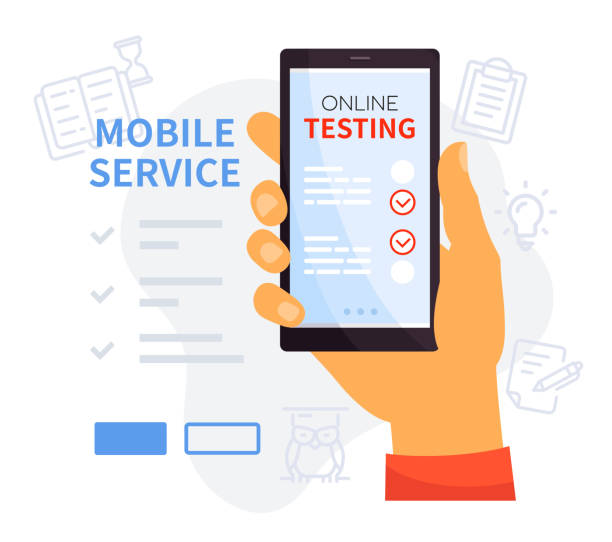Are you still doubtful about using automation testing with mobile test cases? Then we must say that you are massively lacking behind, as it is almost impossible to provide the best experience with modern mobile apps by only manual testing. So, what’s the solution? It is high time to start investing in advanced testing processes like Selenium mobile testing.
Now, you might say that Selenium is designed to only run the test cases on web applications. Although it is true, with the help of native integrations with Appium, you can extend the capabilities of Selenium to run the test cases on mobile apps as well.
Unfamiliar with Selenium mobile testing? Don’t worry! We are here for you. Our article will help you understand how you can run your mobile test cases with Selenium. We will also help you understand the importance of this process, the setup procedure, the best practices, and some of the major challenges that you can face in this step.
What Is Mobile Testing
Are you a new tester who doesn’t even know what is mobile testing? Fair enough! Let us begin from here. It is the process of verifying whether your web apps are functioning properly on mobile devices as well. Now, why is it important? A simple statistic of the total mobile users on the current web will answer this. How? Over 60% of online traffic comes from mobile devices!
Mobile testing is often considered as the most complex process, as there are various operating systems like Android and iOS. By combining all these operating systems, you will have thousands of different devices with thousands more coming every year.
Moreover, it is almost impossible to generalize the mobile space. Why? This is because every mobile device is unique in terms of hardware configurations, display resolution, and even the screen size. Therefore, you need to have a wide range of test devices to ensure a major compatibility index for your applications.
Why Use Selenium For Mobile Testing
The next question that might come into your mind is that why should we even use Selenium for mobile testing, given that you need to use Appium integrations to run the test cases. To justify our choice, we have mentioned the following advantages that you will be able to use with this configuration:
- While using Selenium for running the mobile test cases, you will have access to cross-platform support. This means that you can use the same automation test scripts to run the test cases on both Android and iOS devices. This is not only a cost-efficient way but also saves a lot of delivery time.
- Prefer a particular programming language? Selenium lets you write the tests in any language. What does this mean? You can choose your own language, and Selenium will automatically convert it into a language that it can understand natively for running the test cases.
- Selenium is a completely open-source infrastructure, which means that you do not have to pay any licensing fees to use its features. This open-source structure has also given rise to a huge community of developers and testers who will help you whenever you are stuck. They also create various detailed documentations and guides to help you with this tool.
- Selenium is highly integration-friendly. This means that you can easily add various continuous deployment and continuous integration tools like Jenkins, GitHub Actions, and many more. This is a very important part of running the development and testing processes at the same time.
The Role Of Appium In Mobile Testing
Given that you have to integrate Appium with Selenium for running the mobile test cases, it is only fair that we develop a comprehensive idea about what is Appium. It is yet another open-source automation tool that helps you run the automation test cases on mobile applications with Appium, like native apps, hybrid apps, and cross-platform apps.
Appium also provides a unified API so that you can run the same test cases on multiple configurations without recreating them for every single target device. If you’re curious about how Appium works, let us now divert our focus towards the WebDriver protocol that is used by Appium:
- At first, the WebDriver protocol translates the Selenium WebDriver command into UI Automator for Android test cases or executes test commands for iOS test cases.
- After this, the test script will automatically communicate with the Appium server to initiate the entire test execution process.
- After communicating, the Appium server will translate the Selenium WebDriver commands depending on all the test scripts that you have initially uploaded to the server.
- The final step in this process is Appium sending the commands to the device using vendor-specific drivers. After receiving the commands, the device will automatically initiate the execution process and display the final results to you after it is completed.
Challenges Of Selenium Mobile Testing
Although Selenium mobile testing is a very advanced process, you may encounter certain challenges during this process. To ensure that you do not face any unwanted obstacles or have a decline in your test quality, we have mentioned some of the major challenges below with their most appropriate solutions:
- Due to the huge variation in the mobile industry, you will have a device fragmentation issue. This means that although your app might be perfectly compatible on one device, it will face severe compatibility issues on other devices. The only solution to this problem is to have a huge device lab consisting of thousands of real devices.
- While running the mobile test cases, you will quickly realize that the mobile test runs slower when compared to desktop test cases. This is especially visible when you are running the test using a cloud environment. To avoid the sluggishness in the test cases, you can use a faster and more secure network connection.
- The user interface on a mobile device changes very quickly. So, if you’re using a brittle locator to find the elements on mobile devices, you will face flaky test reports in the execution process. Instead, you should rely on advanced locators like CSS selectors or XPath for element location.
- Finally, it is initially a very complex process to get started with mobile automation testing. This is because it not only has a very high initial investment but also comes with a learning curve when the developers and testers have to get them accustomed to this new technology.
Best Practices For Selenium Mobile Testing
While running automated mobile testing with Selenium, we highly recommend you to add the following best practices with the test infrastructure to improve the productivity, scalability, and quality of your overall testing environment:
- Although emulation and simulation softwares might be cheap, it is very important to add real device testing with the mobile testing environment. If you want to avoid the expense and hassle of a physical device lab, you can easily invest in cloud-based platforms like LambdaTest.
- To ensure the scalability and maintainability of mobile test cases, you should start investing in modular test scripts. A very easy way of implementing this approach is to use design patterns like Page Object Models. With this principle, you can separate the testing data from the actual test cases.
- While running mobile automation testing, you should initiate the automation test cases as part of the build pipeline using tools like Jenkins and GitHub actions. You can also run the automation test cases in a format where the development and testing steps are performed at the same time to reduce the feedback loop.
- It is also important to have comprehensive reporting measures so that you can document all the errors and bugs that you’re finding in the infrastructure of your application. This step will not only help avoid the previously known errors but will also provide a common understanding about the current status of the development project.
- Finally, you should develop a very thorough understanding of your application and own requirements so that you can create additional practices that will be customized to your specific needs.
Tools For Selenium Mobile Testing
While you’re executing the test cases with Selenium, you can use various tools that will further assist you in the testing process. To shed more light over this segment, we have mentioned the most popular tools below:
Appium Inspector
This is a visual tool which will help you inspect all the web elements and also record the interactions. Using this tool, you can not only verify the proper placement of all the UI elements under application infrastructure but also ensure that they are properly functional.
Allure Report
While using Selenium mobile testing, you can easily add Allure reports so that you can further improve the reporting of your test cases. This will be a very important step to ensure that you are receiving high-quality information about all the bugs and errors that might be present within the application.
LambdaTest
We all know that real device testing is a very important part of creating a mobile-friendly test environment. This is because with this step, you will be able to ensure that the physical parameters of the device won’t have any negative impact on the functioning of your mobile application. But the major question is that how can you perform this process while avoiding the millions of dollars in setup and other expenses?
It’s very simple! You should start investing in cloud-based platforms like lambdaTest.
LambdaTest is an AI-native test orchestration and execution platform that lets you perform manual and automation testing at scale with over 3000+ browser-OS combinations, and 10,000+ real devices.
The Bottom Line
Based on all the factors that we put forward in this article, we can easily come to the conclusion that mobile testing is a very important part of the modern software testing infrastructure due to the mobile first architecture of the new industry.
So, when you pair Selenium mobile testing with Appium, you can automate and validate your mobile applications on a wide range of platforms and devices. Using all the strategies and best practices that we have mentioned in this article, you can ensure that your applications are not only functional but also providing the best experience to your customers.
Want one final advice? Watch out for all the upcoming trends and innovations in the segment of mobile testing. If you incorporate them early, you will be providing such an experience to your customers that was previously impossible to even imagine.



